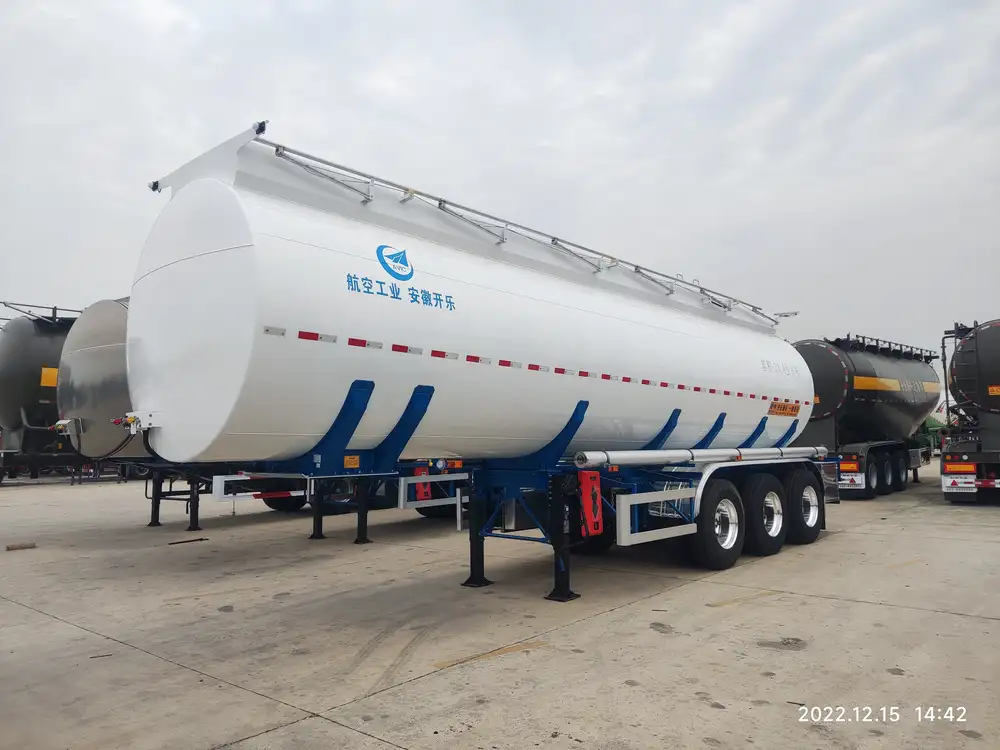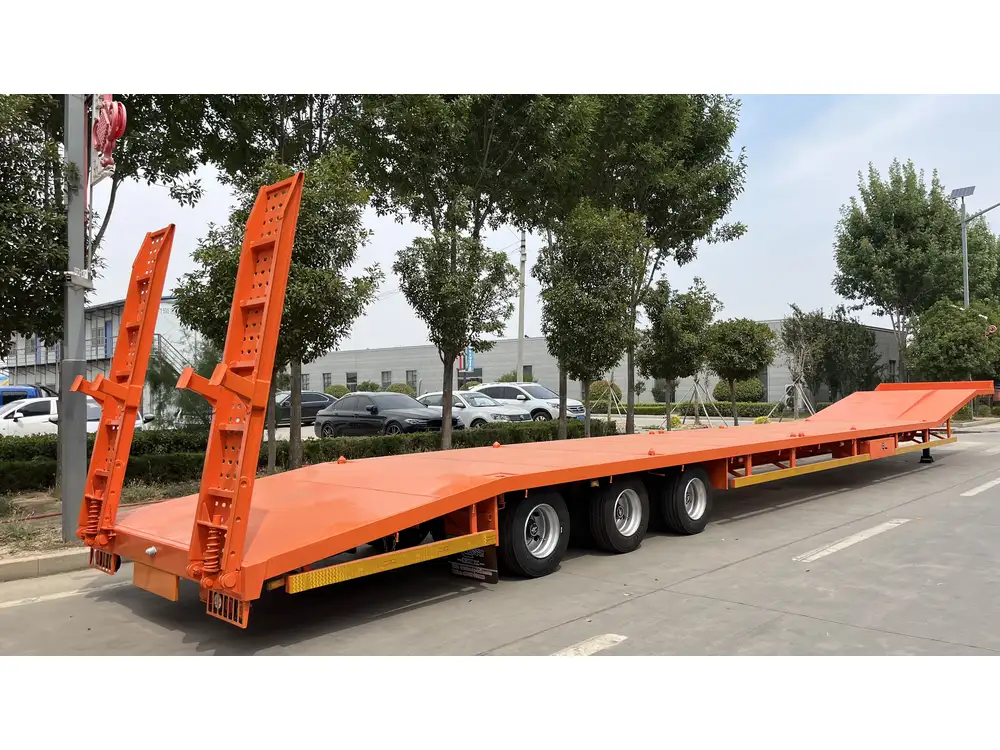Introduction to Fuel Tanker Capacity
Fuel tankers serve a critical role in the transportation of petroleum products, ensuring that fuels reach their intended destinations efficiently and safely. However, a fundamental question arises: How much fuel does a fuel tanker carry? The answer is multifaceted, influenced by several parameters such as tanker design, regulatory requirements, and the specific type of fuel being transported.
To grasp this topic, we will explore various dimensions: the range of capacities across different tanker types, the technical specifications involved, industry standards, and logistical considerations that influence fuel tanker operations.
Types of Fuel Tankers and Their Capacities
Fuel tankers come in several forms, each designed for specific types of fuel and varying capacities. Here we detail the predominant types of fuel tankers and their typical capacities:
| Type of Tanker | Typical Capacity (Gallons) | Common Uses |
|---|---|---|
| Liquid Bulk Tankers | 5,000 – 30,000 | Transporting gasoline, diesel |
| Chemical Tankers | 2,000 – 15,000 | Transporting chemicals and fuels |
| Vacuum Tankers | 2,000 – 5,000 | Collecting and transporting waste |
| Oil Tankers | 20,000 – 550,000 | Transporting crude oil and refined products |
| Barge Tankers | 10,000 – 100,000 | Transporting fuels on waterways |
| Mini Tankers | 1,000 – 5,000 | Delivering fuel to small businesses |

Liquid Bulk Tankers
Liquid bulk tankers, often referred to as the workhorses of fuel transportation, have a wide capacity range. The ability to carry between 5,000 and 30,000 gallons makes them ideal for transporting a variety of fuels, including jet fuel, gasoline, and diesel fuel. Their design incorporates specialized pumps that ensure efficient loading and unloading, while many models can carry multiple fuel types simultaneously thanks to compartmentalized structures.
Chemical Tankers
Equipped to handle both hazardous and non-hazardous materials, chemical tankers generally boast capacities between 2,000 and 15,000 gallons. These tankers are essential for transporting fuels that require stringent handling protocols due to their chemical nature. The variability in their design allows for various compartments, helping to prevent the mixing of incompatible substances.
Vacuum Tankers
Vacuum tankers are tailored for a specific purpose: transporting waste or sludge. Their capacities typically range from 2,000 to 5,000 gallons. Using a vacuum pump system, these vehicles can efficiently remove waste from septic tanks or industrial sites, displaying a unique versatility that impacts operational efficiency.

Oil Tankers
The largest of the tanker types, oil tankers, can accommodate an astounding amount of fuel – from 20,000 gallons to an impressive 550,000 gallons. Designed for the transportation of crude oil and refined products across oceans, these vessels are vital to global fuel supply chains. The capacity of oil tankers significantly influences market dynamics, affecting fuel availability and pricing.
Barge Tankers
Primarily used in inland waterways, barge tankers bridge the gap in fuel transport where road or rail access is limited. Ranging from 10,000 to 100,000 gallons, these vessels offer a brigade of benefits, including reduced transportation costs and minimized environmental impact compared to truck deliveries.
Mini Tankers
With smaller capacities, typically aligning from 1,000 to 5,000 gallons, mini tankers provide on-demand fuel delivery solutions particularly suited for small businesses and farms. Their design allows for street-level access, enabling efficient refueling of stationary or mobile equipment.

Regulatory Considerations
Understanding how much fuel a tanker carries is not an isolated technical query; it intertwines with legal and regulatory contexts. Countries impose strict regulations on fuel types, tanker construction standards, and safety protocols to mitigate risks associated with transporting volatile substances.
Environmental Regulations
The environmental implications of fuel transportation are profound. Countries and regions have developed frameworks that stipulate how much fuel can be transported based on environmental sustainability practices. Examples include limits on emissions and structural requirements for tankers to avoid spills.
Safety Standards
Adherence to safety standards is non-negotiable in fuel transport. Measures enforced by organizations such as the Department of Transportation (DoT) and the Environmental Protection Agency (EPA) guide carriers in meeting structural integrity criteria and operational efficiencies, which ultimately affect the total amount of fuel that can safely be transported.

Factors Influencing Fuel Tanker Capabilities
Several factors deeply influence how much fuel a tanker actually carries, often leading to variations within the established capacities.
Design and Structure
The design of a tanker directly influences its fuel capacity. Tankers may have specialized multi-compartment designs allowing for the transportation of different fuel types. However, this can somewhat limit total capacity compared to a single-fuel tanker.
Regional Regulations
Regulations on maximum allowable weight may constrain the volume of fuel transported. A tanker filled to its weight limit might carry less fuel if additional loads compromise road safety.

Fuel Type
Different fuels present varied densities; for instance, diesel is denser than gasoline. Therefore, a tanker could ostensibly carry fewer gallons of diesel compared to gasoline by weight, resulting in unique capacity considerations based on fuel type.
Advantages of Understanding Fuel Tanker Capacities
Comprehending the capacities of fuel tankers can empower businesses, drivers, and manufacturers alike.
Logistics and Planning
Effective logistics planning requires an understanding of how much fuel can be transported at one time. Logistics managers in fuel companies optimize delivery schedules based on tanker capacities, ensuring efficiency while controlling costs.

Cost Management
Fuel transportation costs deeply intertwine with tanker capacities; understanding these figures can lead each stakeholder to identify logistical improvements, savings potential, and capacity optimization.
Supply Chain Efficiency
A well-informed approach to tanker capacities can solve potential supply chain hiccups. Knowing how many gallons each tanker can carry allows for better inventory management and precise scheduling.
Comparison Between Fuel Tankers and Other Transport Methods
To illustrate the importance of fuel tanker capacities in context, we can compare them with alternative fuel transport methods.
| Transport Method | Capacity (Gallons) | Efficiency | Cost |
|---|---|---|---|
| Fuel Tankers | 1,000 – 550,000 | High | Variable |
| Rail Tankers | 20,000 – 30,000 | Moderate | Moderate |
| Trucks | 5,000 – 30,000 | High | High |
| Barges | 10,000 – 100,000 | High | Lower |

Efficiency and Cost Analysis
Fuel tankers and barges reign supreme in their efficiency, particularly over long distances or when navigating complex supply chains. Conversely, trucks offer flexibility but often at elevated costs associated with fuel consumption and wear.
Conclusion
Determining how much fuel does a fuel tanker carry is pivotal for stakeholders across the supply chain. A comprehensive understanding of tanker types, legal constraints, and industry dynamics enhances operational efficiency and informs better decision-making processes.
As the fuel industry navigates a landscape increasingly characterized by economic pressures and regulatory adaptations, insights into tanker capacities will illuminate pathways to greater resource optimization and strategic planning. By delving into the multifaceted world of fuel transport, we equip ourselves with the knowledge to advance in this essential industry, thus ensuring the reliable and efficient distribution of vital energy resources.
Recognizing the breadth of fuel tanker capacities and their implications not only addresses user inquiries but also serves as a crucial foundation for informed discussions about energy logistics, sustainability practices, and technological advancements in fuel transportation.



